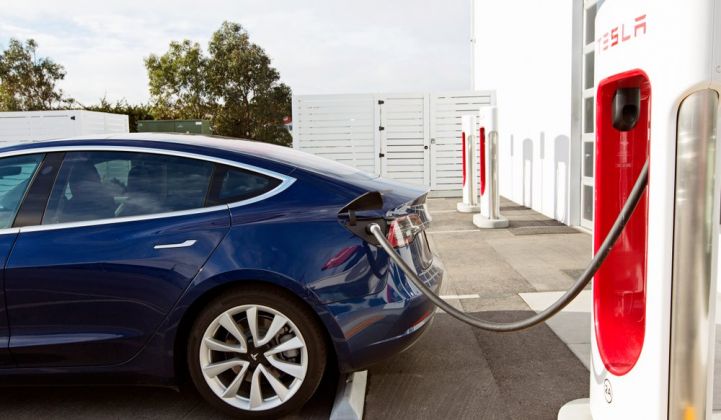On Sunday Tesla announced it just barely missed its goal to produce over 5,000 Model 3s in one week.
The last Model 3 reportedly rolled off the line hours after the midnight deadline CEO Elon Musk had set. Tesla targeted production of 5,000 Model 3s per week by the end of Q2. The company met its Model S and Model X production targets, producing 7,000 total vehicles for the week.
Musk touted the production numbers as a historic win.
“We either found a way, or by will and inventiveness, created entirely new solutions that were thought impossible,” Musk wrote in a companywide email on Sunday that CNBC released. “Whatever. It worked.”
Musk added, “I think we just became a real car company.”
Scaling up production of Model 3s has created a host of issues for the company, as it missed several manufacturing goals in past months and pushed critics to question its future viability.
Despite nearly meeting the Q2 goal, it's unclear if Tesla can continue producing Model 3s at the same pace or faster moving forward. In order to up manufacturing, Tesla has at times encouraged workers in other areas of manufacturing to move over to the Model 3 line to produce cars faster.
The Model 3 push has been tough for the company.
In April, the Center for Investigative Reporting detailed concerns about Tesla’s Fremont factory conditions and underreported workplace injuries. That report spurred a Musk tirade against the media on Twitter. The company is now under investigation by California’s Division of Occupational Safety and Health.
In June, Tesla announced it would lay off 9 percent of its workforce and close solar installation facilities in order to cut costs. At the time Musk said no production associates would be laid off and Model 3 production would not be impacted.
Most recently, the Chinese government announced it will add a 25 percent tariff to U.S. cars beginning on Friday as a form of retaliation in the tariff battle with the Trump administration. China had previously planned to reduce its existing imported car tariff from 25 percent to 15 percent, but these new tariffs will now add to a total 40 percent tariff for American-made vehicles.
That puts companies such as Ford and Tesla at a disadvantage to European and Asian manufacturers. According to the China Automobile Dealers Association, Tesla exported about 17,000 cars to China last year, making it the company’s second-biggest market. Though Tesla has plans for a factory in Shanghai, it’s unclear when it will open.
Despite the challenges and investor skepticism, Tesla continues to ride high. Its market capitalization rivals General Motors and beats Ford. In terms of sales, it still blows away other electric-car companies in the U.S. And on Monday, the head of Panasonic’s automotive business, Yoshio Ito, said the company would "consider additional investment" in Tesla's Gigafactory.
Panasonic said Tesla’s Model 3 push had created battery cell shortages.
Musk, in true Muskian fashion, is stepping up the hype. On Monday he asked in a Twitter poll, “Wonder if we can hit 10,000/wk. Can we do it?”




